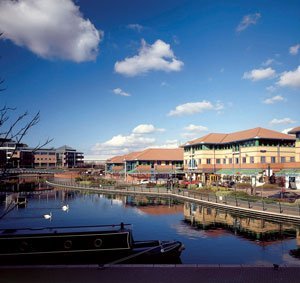
This case study examines how one organisation dealt effectively with a key funding issue when faced with the loss of funds from a major area. It describes how British Waterways has re-aligned its activities in a way that maximises revenue potential from a range of sources in order to create financial stability.
British Waterways
As a public body responsible to the Department of the Environment, Transport and the Regions, British Waterways manages and cares for over 2,000 miles of Britain’s canals and rivers. British Waterways maintains canals for boating, angling and other uses. Work includes:
- ensuring canals and rivers are safe places for people to enjoy
- maintaining locks, bridges, towing paths and the waterways themselves
- looking after the whole environment, i.e. buildings and wildlife that are associated with canals and rivers
- endeavouring to ensure there is the right amount of water in canals and rivers
- earning income from a wide range of waterway-related businesses to reinvest in the future of the waterways.
British Waterways, like all business organisations, whether in the public or private sector, serves the needs of various groups of people known as stakeholders. A mission statement shows stakeholders what an organisation is trying to achieve. British Waterways’ mission statement:
‘Our business is to manage the inland waterway system efficiently for the increasing benefit of the United Kingdom. We aim to provide a safe and high quality environment for our customers, staff and local communities. We take a commercial approach and strive for excellence in every aspect of our work. The heritage and environment of our waterways will be conserved, improved and made to work well for future generations.’
British Waterways aims to maximise net income so that it can re-invest that money in protecting, conserving and enhancing the waterway infrastructure. Objectives are more precise statements that follow on from the mission statement. British Waterways’ objectives are to:
- continue the successful growth of waterways for leisure use
- improve the waterways’ environmental and heritage value
- create an adequate and secure financial base
- promote profitable use of the waterways and maximise third party investment from private, public and voluntary sectors
- eliminate the backlog of maintenance
- increase productivity.
Funding the waterways
The decline in the fortunes of the canal system was a steady process. Over the years, the waterways were used less and less for freight transport. By the early 1960s, it had become increasingly difficult to meet rising costs of operation through increased charges to customers. Maintenance work to the waterways was also urgently needed across the country. The Transport Act 1962 made the British Waterways Board responsible for maintaining 2,000 miles of Britain’s 200 year old canal and river transport system. Grant aid was awarded by the Government to support this process.
The grant from the Department of the Environment, Transport and the Regions (DETR) recognises the value of the waterways to the nation. As everyone who pays taxes helps to maintain canals, rivers and their towing paths, British Waterways wants to maximise their use – whether for pleasure, business or carrying goods.
In 1998 British Waterways faced renewed funding problems. Traditionally British Waterways has depended on the Government as the cornerstone of its finances, but the situation is changing. The extract from the 1997/8 Annual Report and Accounts shows that the grant from the Department of Environment has remained static, and in real terms has fallen, while, in direct contrast, income generated by British Waterways is rising. (See table below).

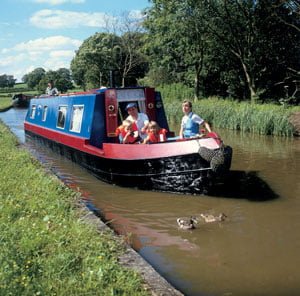
By earning revenue from other sources, British Waterways is able to have greater influence over its use and in doing so, can become more customer focused – spending money in order to meet customer needs and requirements. Funding from other sources has therefore helped British Waterways to become market-orientated. British Waterways’ users and customers include:
- boaters – private and hire boaters
- anglers
- cyclists
- walkers
- unpowered craft – canoeists and sailors
- organised groups
- property tenants.
Not all of British Waterways’ customers pay directly to use the waterways. Walkers, for example, make their contribution through taxation. Customers also include people who purchase water from British Waterways, such as farmers, who use water for irrigation, or organisations such as Wessex Water and Thames Water. Ford and British Steel use the water for cooling and Pilkingtons uses water for industrial processes involved in making glass.
Becoming market-orientated was particularly important for British Waterways. It meant that in order to meet its objectives, British Waterways would have to listen to its customers and then respond to their needs and requirements. According to the Chartered Institute of Marketing ‘Marketing is the management process responsible for identifying, anticipating and satisfying consumer requirements at a profit.’ To achieve this, British Waterways has identified two broadly-based marketing objectives:
- generation of significant additional income from leisure uses of the waterways and property reinvestment
- re-positioning of British Waterways to achieve public recognition that the organisation is:
- a provider of high quality, clearly branded products and services related to waterways
- an organisation worthy of public support
- a caring, responsible and effective custodian of the waterway heritage.
In order to meet these objectives, British Waterways re-positioned itself, becoming more businesslike and customer-focused. Re-positioning has helped British Waterways recognise that it exists in a competitive world with key opportunities in the fields of leisure and tourism and property development. It is realigning its activities to meet the needs of customers in these markets. Outlined below are some of the market focused revenue generating activities carried out by British Waterways.
Fibreway
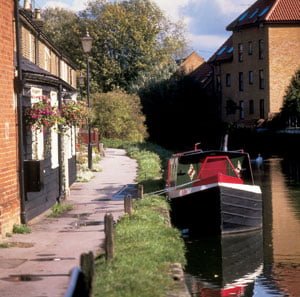
The agreement provides Fibreway with the rights of passage over land. It involves the installation of optical fibre cables, mainly along the towpaths of Britain’s canal network, and leases access to these cables to telecommunications network operators and Internet service providers, over which they can transmit their signals. The route links London and the South-East with Birmingham, Nottingham, Sheffield, Leeds, Manchester, Gloucester and Bristol. Routes linking London, Birmingham, Leeds and Manchester and Glasgow to Edinburgh, plus connections around London and the Basingstoke corridor have already gone live. This project has considerable benefits for British Waterways as the extra income, generated through this public private partnership, is all invested by British Waterways in the canal infrastructure.
There is a widespread recognition of the vital role of waterways and their role as an important catalyst for urban and rural change. As a result, a variety of sources of funding have helped to co-fund water-related regeneration and development projects. These funds cannot be used to meet or substitute Government statutory obligations and can only be used on canals called ‘Remainder’ canals which receive no direct grant funding. The funding sources have included:
- Heritage Lottery Fund – one of the five UK Lottery funds which can be used to support capital projects which improve the heritage of canals and their setting.
- Sports Lottery Funding – another Lottery fund administered by National Sports Councils for capital projects which create and improve facilities for sport.
- Single Regeneration Budget (SRB) – a competitive programme administered by regional Government offices which supports initiatives which ‘protect and improve the environment and infrastructure and promote good design’.
- Rural Challenge – an annual competitive challenge programme administered by the Rural Development Commission.
- English Partnerships awards to fund projects that reclaim derelict land or act as a catalyst for regeneration.
- Millennium Commission – to assist communities in marketing the close of the second millennium and in celebrating the start of the third.
There are also European sources such as:
- European Structural Funds – European Union aid to lesser developed regions and to sectors of the community in difficulty is channelled largely through these funds.
- Regional Challenge – a competitive challenge fund designed to stimulate large and imaginative projects.
- Other European funds, known as community initiatives, focus on deprivation caused by more specific reasons.
These include initiatives such as:
- Rechar – funding aimed at improving the physical and social environment in coal mining areas to aid economic regeneration.
- Konver – an EU programme directed at areas experiencing the run-down of military or other defence establishments.
British Waterways has been involved in many different partnership projects. In the Lowlands of Scotland, £32 million of funding from the Millennium Commission is partnering £46 million of private, voluntary and other investment to restore coast-to-coast navigation. In the south of England, £25 million, the Heritage Lottery Fund’s largest-ever award, is helping to restore the Kennet & Avon Canal. This type of third-party funding is helping British Waterways to make massive increases in investment.
Property
Britain’s 200-year old waterway system is a vital part of the nation’s cultural and architectural heritage. British Waterways is responsible for more than 2,800 listed buildings and structures, and more than 130 scheduled monuments that create the environment of the waterways.
British Waterways owns nonoperational investment property worth around £210 million. Whilst the majority of land is needed to operate the waterway network, the remainder provides a sizeable income which can be spent both on canal maintenance and developing buildings as part of the waterway heritage.
Income comes mainly in the form of rents, licences and wayleaves. One of the roles of British Waterways’ commercial department is to ensure that property income and the value of the portfolio rises. The surveyors negotiate improved leases on existing property and create new income from development. Direct property income has increased over a twelve year period from £4.4 million per annum in 1985/86 to £19.6 million in 1997/8.
British Waterways seeks to improve the quality and certainty of its income through a process of disposal and re-investment or acquisition, thereby achieving a better property portfolio. For example, British Waterways invested £2.5 million in a partnership with the Sheffield Development Corporation which facilitated the redevelopment of some 20 acres, including residential, commercial and leisure areas which is now producing a significant income.
No organisation can exist without a good understanding of the market-place in which it operates. For British Waterways, market analysis helps to:
- identify the competition
- improve knowledge of consumers and competitors
- use trends to forecast future activities
- develop plans and strategies which provide a competitive advantage.
Almost half the UK population lives within five miles of a British Waterways’ canal or river navigation. With leisure now playing an increasingly important role in society, the uses made by waterways are increasingly wide-ranging and diverse. The Henley Centre for Forecasting monitors the UK leisure market closely and estimates that this market is worth approximately £110 billion, with real rates of growth of 7.6% in 1996 and 7.2% in 1997.
Facts:
- According to a recent national survey which looks at how people escape from stress, a weekend of canal boat cruising is now twice as popular as a day at an amusement park and equally as attractive as a two-day seaside break.
- Growth in affluent, active, retired people is helping to grow the boating market.
- The hireboat industry on the canals alone attracts over 250,000 customers each year.
- The main reason why people take part in water sports relates to social factors, relaxation and fitness.
- There are around 100,000 anglers that regularly fish British Waterways’ owned sites each year which are licensed to almost 300 angling clubs.
- 7.2 million cyclists visit British Waterways towpaths each year.
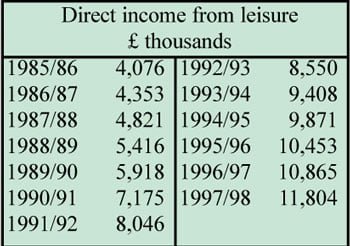
Direct income from leisure has increased from £4.1 million in 1985/6 to £11.8 million in 1997/8.
Maintaining standards for customers
In a competitive market, organisations are dependent on their customers. It is important that they understand how customers view their organisation as well as what customers want. British Waterways’ 1997 survey into the views of main user groups showed that steady improvements in standards were being maintained. Regular programmes of market research and consultation, including formal contracts, customer research and surveys, are analysed by an independent organisation.
For example:
- Boat owners’ views have been surveyed since 1991. Levels of satisfaction have risen significantly and 93% of boaters are happy with the overall upkeep of the waterways, as opposed to 83% in 1991.
- In 1997, 77% of angling clubs said they were happy with the quality of fishing provided on the waterways.
- 90% of informal visitors are happy with the overall upkeep of the waterways, while 40% felt that upkeep had improved during the past year.
Changes to funding provisions were always likely to be a challenge for British Waterways. However, it has led to a process of commercialisation which has not only generated more revenue but has also led to increased investment, greater usage and media profile. British Waterways is a market-oriented organisation with specific aims and objectives. It can continue to develop its existing business and develop new business opportunities, earning new income for the waterways and benefiting many different groups of users.
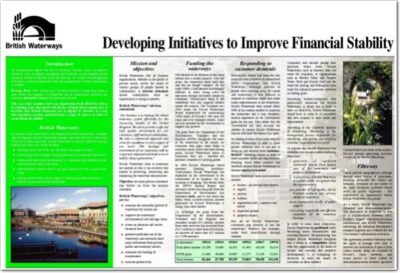 Developing initiatives to improve financial stability (PDF)
Developing initiatives to improve financial stability (PDF) 